Internal Links: Create SEO Magic

You've spent hours perfecting your website content. You're publishing blog posts, updating your pages, and doing everything you're supposed to do. But here's the thing - are people actually finding your content? And when they do, are they sticking around?
With over 200 million active websites competing for attention, getting noticed isn't just about having great content anymore. You need strategy. And one of the simplest, most overlooked strategies is sitting right under your nose.
Internal links.
TLDR: Internal links are clickable pathways connecting your website pages together. They help visitors navigate your site easily while telling search engines what your content is about. The result? Better SEO rankings, longer visitor sessions, and more people discovering your best content. Best part? You can start adding them today without any technical expertise.
Yeah, we know - it sounds technical. But stay with us, because this one simple thing can work absolute magic for your SEO. And the best part? You don't need to be a tech wizard to make it happen.
What Exactly Are Internal Links?
Think of internal links as the hallways in your website. They're the clickable pathways that guide visitors from one room (page) to another. They show up in your navigation menus, in your blog posts, in those helpful call-to-action buttons, and in your sidebar widgets.
But here's what makes them powerful: internal links do double duty. They help your visitors find what they need, and they help search engines understand what your site is all about. Win-win, right?
Remember when we talked about SEO (search engine optimization) - the magic that helps people actually find you on Google? Well, internal links are a huge part of that magic. They tell search engines which pages matter most, how your content connects, and why someone should trust your site enough to recommend it.
When you add internal links to your content, you're essentially rolling out the red carpet for your visitors. You're saying, "Hey, if you liked this, you're going to love what's over here." It keeps them exploring, learning, and most importantly - staying on your site longer.
Why Should You Care About Internal Links?
Good question. Here's what internal links do for you:
They spread the love around your entire site, helping all your pages rank better - not just your homepage.
They create a clear map for search engines to understand your website's structure and what topics you're an expert in.
They make it ridiculously easy for visitors to find exactly what they're looking for without getting lost or frustrated.
Think about it this way: when someone lands on your blog post about Instagram marketing, wouldn't it be great if they could easily click through to your post about creating engaging Instagram content? That's internal linking in action. You're helping them get more value, and you're keeping them engaged with your brand.

The Three Types of Links You Need to Know
Not all links are created equal. You've got three main players in the linking game:
Internal Links - These are the links we're focusing on today. They keep visitors moving around your website, discovering more of your awesome content.
External Links - When you link out to other websites (like citing a source or sharing a helpful resource). These show search engines you're doing your research and connecting your content to the broader web.
Backlinks - These are the golden tickets of SEO. When another website links to your site, it's like getting a vote of confidence. You can create backlinks by sharing your content in newsletters, getting press coverage, or being active on social media.
Here's a pro tip: make sure your site looks great on mobile devices. With more people browsing on their phones than ever, a mobile-friendly site isn't optional anymore - it's essential for SEO success.
How Internal Links Boost Your SEO
Want to know how search engines really work? They send out little bots (we call them crawlers) that start on your homepage and follow every link they can find. These bots are like digital detectives, piecing together how your site is organized and what you're all about.
Your internal links are the breadcrumb trail these bots follow. The more clearly you connect your content, the better search engines understand your expertise. And when search engines understand you, they're more likely to show your site to people searching for what you offer.
It's like building a web of connections - each link tells search engines, "These topics are related, and we know our stuff."
Keep Visitors Engaged and Coming Back
Here's something you might not know: search engines pay attention to how long people stay on your site and how many pages they visit. They call these metrics "pages per session" and "bounce rate."
A bounce happens when someone lands on your page and immediately leaves without clicking anything. Ouch. That tells search engines your content wasn't helpful or engaging.
But when you strategically place internal links throughout your content, you give visitors a reason to keep exploring. They might come for one blog post and end up reading three more. That's exactly what search engines want to see - engaged, happy visitors who find value in your content.
Should You Update Old Blog Posts with Internal Links?
Absolutely! In fact, this is one of the smartest things you can do for your SEO.
Every time you go back and update an old post, Google takes notice. It's like telling search engines, "Hey, this content is still relevant and valuable." When you republish or refresh old content, you're giving it new life.
Here's a strategy that works: add a "Last Updated" date to your posts. Why? Because Google has search filters that let people see only recent content. If your post looks outdated, you might be missing out on traffic - even if the information is still spot-on.
So go ahead, dust off those older posts, add some fresh internal links to your newer content, and watch your traffic grow.
How Many Internal Links Should You Use?

Good news - you don't need to go overboard with this.
The key is balance. Too many internal links can actually confuse search engine bots (and your readers). When Google's crawlers hit a page with dozens of links, they don't know which ones matter most. And confused crawlers mean missed opportunities for your SEO.
The same goes for your visitors. A page cluttered with links everywhere feels spammy and overwhelming. If someone feels bombarded, they'll leave. And remember - a bad user experience hurts your SEO.
So here's your mantra: don't over-link, and definitely don't overthink it. Just make sure the internal links you add actually make sense with your content.
For example, if you're writing about healthy breakfast recipes, linking to your post about morning workout routines makes perfect sense. But linking to your article about changing a car tire? That's random and confusing.
Stay relevant. Your readers (and search engines) will thank you.
Focus on Your Most Important Pages
Think about your website for a minute. Which pages matter most to your business? Your services page? Your products? Your contact page?
These are your MVPs - your Most Valuable Pages.
When you consistently link to these pages throughout your blog posts and content, you're sending a clear signal to Google: "These pages are super important to us." And Google listens.
You can also add a "Related Posts" section at the end of your blog articles. There are plugins that do this automatically, but you can also add these links manually. Either way works - the important thing is making those connections.
Another smart move? Put your most important pages right on your homepage. Maybe in your main navigation, or featured prominently in your content. When your key pages are just one click away from your homepage, search engines rank them higher. It's like putting your best products in the front window of your store.
Keep those critical pages close to your homepage, and watch them climb in search rankings.
Don’t Forget Your Recent and Popular Posts
Whether a post is brand new or your most-read article ever, it deserves internal links pointing to it.
Here's a clever trick: add your recent or popular posts to your website footer. That way, they show up on every single page of your site. Easy access for visitors means Google notices them more too. Everybody wins.
The Power of Anchor Text
Anchor text is just a fancy term for the clickable words in your link. Instead of writing "click here," you might write "check out our guide to SEO" or "learn more about WordPress security."
It's perfectly fine to use keywords in your anchor text - in fact, it helps search engines understand what the linked page is about. But here's the catch: don't stuff keywords in there just for the sake of it. Keep it natural. Keep it helpful.
Always focus on creating high-quality content with keywords sprinkled in naturally, not crammed in awkwardly. Your readers will appreciate it, and so will Google.
Why Internal Links Matter for Your Small Business
Let's get real for a second. Running a small business means wearing a lot of hats. You're handling customer service, managing your team, perfecting your products or services, and somehow finding time to deal with your website too.
You don't have a massive marketing department. You might not even have a dedicated web person. And that's exactly why internal links are so valuable for you.
Internal links solve one of your biggest website headaches: helping customers find what they need. When someone lands on your site, they shouldn't have to play a guessing game about where to click next. Internal links act like a personal tour guide, smoothly leading them from one helpful resource to another.
And here's the beautiful part: you don't need a big team or fancy tools to implement internal links. You can do it yourself, right now, with the content you already have. Just look for natural opportunities to connect your pages and posts in ways that help your visitors.
For small business owners, internal links also pack an SEO punch without requiring a big budget. Search engines love well-organized, interconnected sites. When you link strategically, you're boosting your chances of ranking higher in search results - which means more people finding your business.
Your Action Plan for Internal Linking Success
Ready to put this into practice? Here's what you need to know:
Internal links guide visitors through your website and help search engines understand your content structure. They're essential for both user experience and SEO performance.
Don't overdo it. Add internal links where they naturally fit and genuinely help your readers. Keep them relevant to your content.
Update those old posts! Refresh your existing content with new internal links to your latest articles. It tells Google your content is current and valuable.
Prioritize your important pages by linking to them frequently and keeping them close to your homepage in your site structure.
Use clear, descriptive anchor text that tells readers (and search engines) what they'll find when they click.
We’re Here to Help
Building an effective internal linking strategy takes time - time you probably don't have when you're busy running your business.
Maybe you're dreaming of having someone who just handles all this website stuff for you. The daily backups, the theme updates, the SEO optimization, and yes - even the internal linking strategy. Someone who makes sure everything works smoothly so you can focus on what you do best.
That's exactly what we do.
We take care of your WordPress website so you don't have to worry about it. We handle the technical details, implement SEO best practices, and keep your site fast, secure, and working perfectly - even while you sleep.
Ready to take website stress off your plate? Contact us today, and we'll create a maintenance plan that fits your needs. Give yourself the gift of peace of mind and get back to growing your business.

